
Sign up for The Wanderful newletter
Join our growing community of people looking to live the simple life!
Let’s build your van now
Join our growing community of people looking to live the Simple Life


)
Are you ready to kick off your DIY Van Conversion? Then it’s time to start gathering all of the necessary tools and materials.
While the Vanlife craze is relatively “new”, many of the products that are being used in professional campervan builds have been around for decades.
Naturally, most DIY Van Builders will head straight to their local hardware store and grab commonly used items for a home renovation. To no surprise, you’ll conveniently find a huge percentage of the necessary tools and materials at stores like Home Depot, RONA, and Lowe’s.
But I’m here to share a few other materials you should definitely consider for your van that you won’t necessarily find at the hardware store.

If your goal is to build a “professional” and durable adventure van that will stand the test of time, then there are a few materials you may want to consider.
Many of the products being used in professional van builds are inspired by other industries such as boating or yachting. Fabrics, flooring, hardware, and electronics cross over well from the marine world into the van life world.
Let’s jump into a few of the products that I would recommend you check out for your upcoming van project.
When it comes to flooring, most DIY van builders will use either:
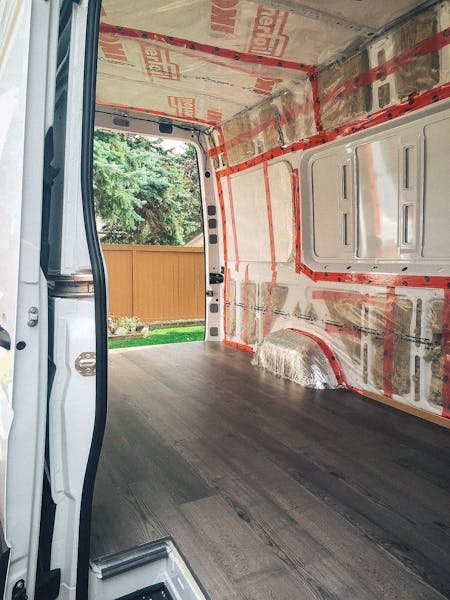
Plank flooring looks great and is very easy to install. For most people, this will be a perfectly fine solution for their van. But when it comes to building a long-lasting adventure van, there are a couple of issues you should keep in mind.
Issue #1: Foot Traffic
99% of the foot traffic will be up and down, back and forth, across a 25-inch space down the middle of your van. Here’s why this is a problem
Issue #2: Changing Temperature
Plank flooring comes in various pieces, which will expand and contract with the changing temperature. Over time it will cause noticeable gaps in your flooring.
For the reasons above, this is why you see most professional van builders using Marine Grade Sheet Vinyl Flooring or Commercial Grade Vinyl Flooring that is all in one piece.
View this post on Instagram
These products are
Some of the most common manufacturers for this flooring are
In my 2019 Sprinter Van Conversion, I chose to use the Nautolex product, which I purchased from a local company called Jackson. Nautlex products are known for
Pro-tip: I would suggest trying to find a local company that sells Marine Grade Vinyl Flooring.
When it comes to selecting your wall materials, the options are endless and it’s going to depend on the overall appearance you’re after.
Here are a few great products that you may not have heard of before.
Chilewich is a woven vinyl product that I’ve personally never worked with but I’m starting to see it more and more on professional van builds. It is known for durability and easy maintenance. You can also choose from a range of designs, colors, and qualities from their product range.
View this post on Instagram
Marine Vinyl is becoming a common product used in van builds. I used perforated Marine Vinyl for my ceiling panels and am happy with how it turned out.
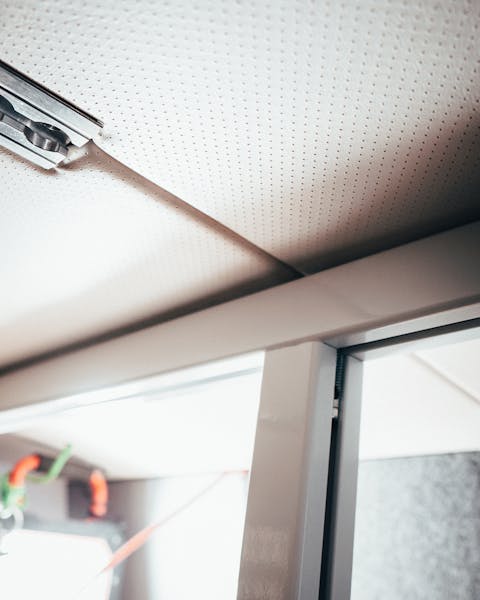
Typically, Marine Vinyl has the following features
If you feel that Marine Vinyl is out of your budget you can always switch to standard automotive vinyl. This is especially true for places like the ceiling and walls.
ACP is two thin pieces of aluminum with a strong composite material between them, giving the product its strength and durability.
The benefit of this product is that
After having my first van for 5 years, I can tell you that the ACP looks like the day that I installed it!
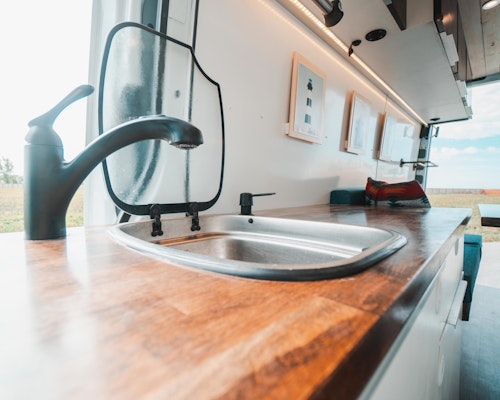
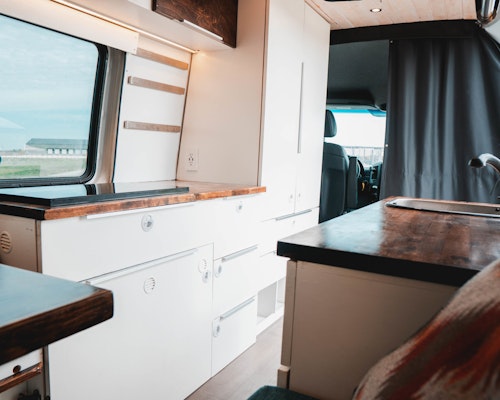
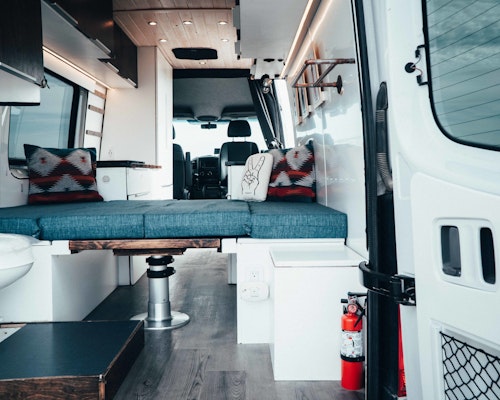
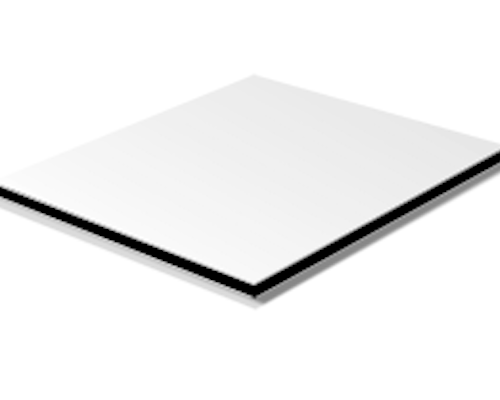




To source this product for your van builds, I would recommend contacting some local outdoor sign manufacturers. This is because a standard application of ACP is in exterior signage, so they will be able to either sell it to you or tell you where they purchase it from.
This product from Richelieu is a super lightweight product to cover up your walls. It feels like a heavy-duty felt with a bit of structure to it. On my second van build, I used this behind all my cabinets as wall covering and cabinet packing.
It is about ½ the weight of ¼ Luan Plywood and gives the inside of your cabinets a really clean, finished look that I think is hard to beat. All in all, I think this product is a gem and I will recommend it one hundred percent!
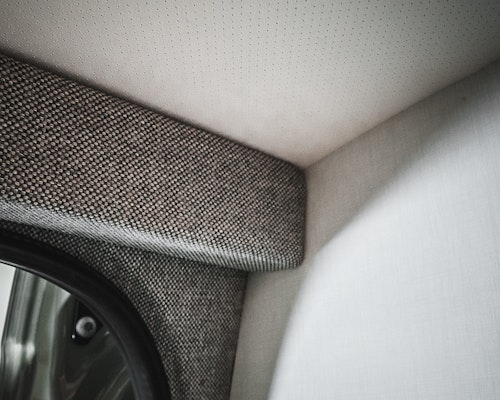
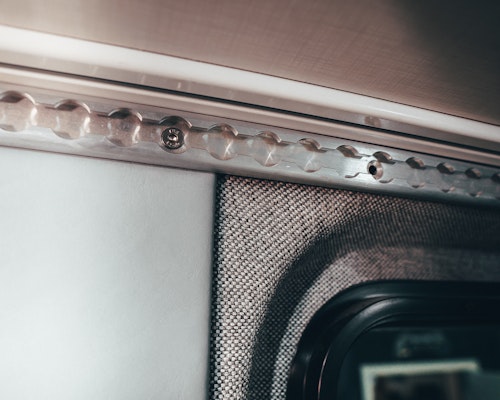
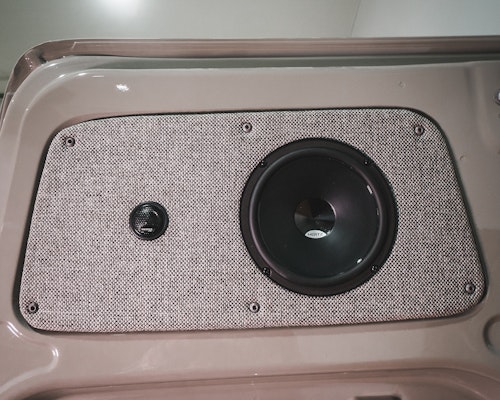
This fabric was a game changer and you can find it on so many professional van builder projects. I used it to do the following
This product is easy to work with and is installed using a contact cement type product that I spray using a cheap paint spray gun that I’ve used numerous times throughout this project.
Even if you are not a professional upholsterer, you will be surprised at the outcomes! The weave pattern in the fabric hides all the small mistakes and minor imperfections, giving you an almost flawless look.
When it comes to cabinet framing, many van lifers opt for traditional wood. I prefer to use 8020 (also called extruded aluminum) as I believe it is a far better option than conventional wood.
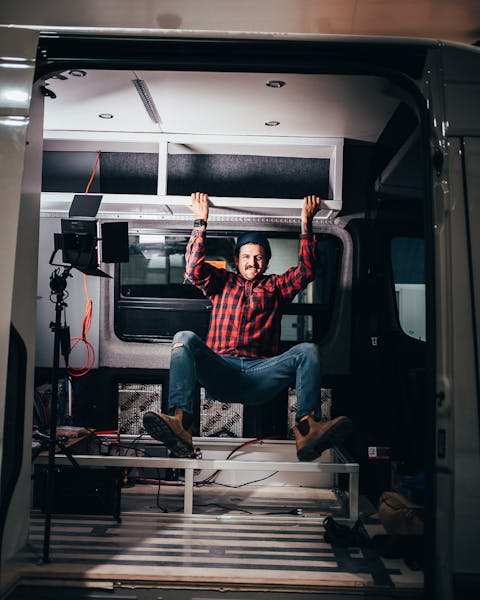
I prefer 8020 extruded aluminum because it is:
Overall, I will recommend going for the 8020 as it is easier to handle, lightweight, and can help you save weight by tweaking the overall outlay of your van.
Here’s a detailed comparison of what I did on the 8020 vs wood that you may find interesting!
For the majority of DIY van builders, you are just going to go the route of painting all your cabinets in the van. This method is 100% fine as long as you do it right.
Here’s when it can become a problem:
Instead, most people quickly toss on 1 or 2 coats of paint and call it day, and they are left with a surface that marks easily and is impossible to clean. I don’t know how many DIY van builders I’ve seen on Instagram a year later re-painting all their cabinets to “refresh the van”.
HPL is a convenient alternative to painting your van yourself. Here’s how HPL stands out from paint:
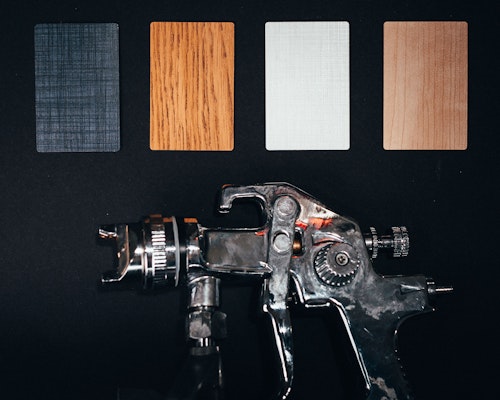
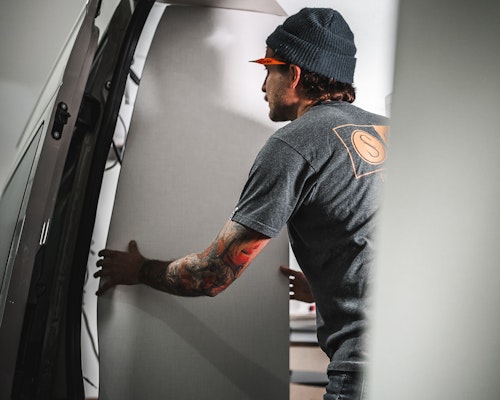
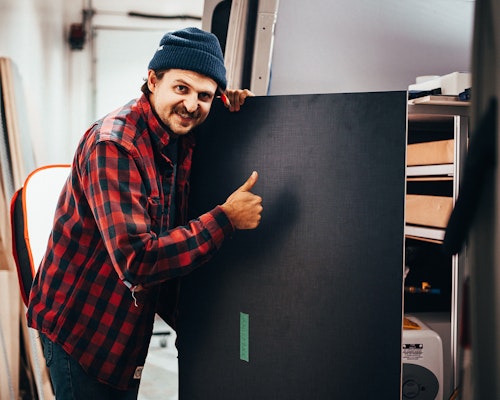
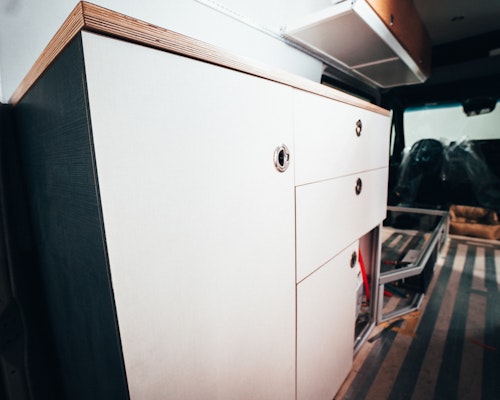

Installing HPL may sound complex but it is not that difficult. Here, I have a complete guide on how you can install HPL and the tools you will need.
The HPL I decided to go with is from Wilson Art and I bought it from Mckillikan, which has a local supplier. Unfortunately, they do not sell to the general public but if you contact them they will direct you to a local representative whom you can purchase through.
The Wilson Art product line has what seems like an endless selection of
Overall the aesthetic HPL from The Wilson Art makes the van interior stand out. I chose a combination of wood grains, subtle patterns, and white for the inside of all the cabinets.
The HPL install is a bit time-consuming and messy when it comes to routering all the edges. You can check out my detailed video on HPL here. But all in all, I do think that the HPL is much faster and more flawless than a quality paint application.
On the first van build, I went to a local fabric store and selected a fabric that I liked but that store no longer exists. Also, the fabric that I selected had a few drawbacks, especially that it was not waterproof.
So after extensive research, I found that many professional upfitters use 1 or 2 products for their cushions.
Pro-tip: You can sew the cushions yourself and save on the cost of hiring a professional to upholster.
I’ve decided to go with the sunbrella fabric, which is the fabric you see when you are looking at outdoor patio furniture. I decided not to go with vinyl products because
Here’s how Sunbrella’s products compare:
I like drawers in my camper van because of two main reasons:
That said, building drawers from scratch can be quite time-consuming and may not be worth it.
A better alternative is the Blum Tandembox. This product is the perfect replacement for your drawers with a cutting-edge design and color-coordinated sides.
The pros are:
When it comes to building out your DIY campervan conversion, the options are endless! I hope that this list gave you some insights into the popular products and companies that the professional builders are using to complete those builds that you are drooling over on Instagram.
Here are the key takeaways from this article:
Good luck with your next van conversion!
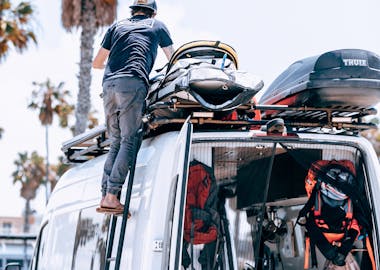)
Whether you want to incorporate all the comforts of home into the van, or you’re gearing up for some adventurous offroading, you may find yourself with a long wishlist of upgrades for your van.
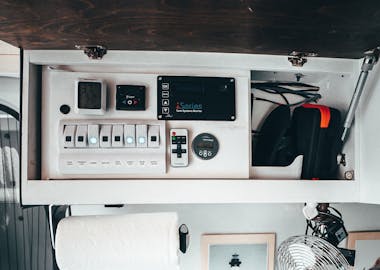)
It’s natural to become hyper-aware of all the systems you have on the go in your new home-on-wheels.
)
When I started living in my van full-time, I was so stoked to hit the road that all I had was a platform for my bed and some minimal storage.